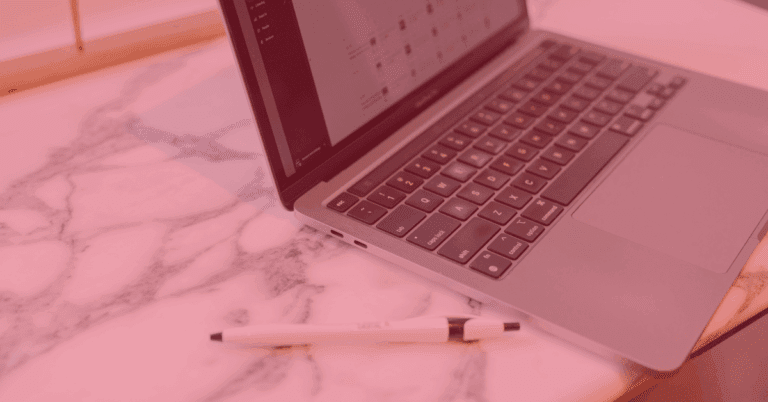Why Personalization in Marketing Packs a Punch
People crave experiences that feel customized for them. Think about how much more likely you are to click an ad that shows a product you’ve been eyeing versus a random one-size-fits-all pitch.
With personalization, you’re not just shouting into the void. You’re having conversations. You’re showing up where your customers already are, saying things they actually care about.

Subscribe
Get marketing insights, agency news, and more – straight to your inbox.
When all these factors align, these results follow naturally:
- Engagement shoots up. People participate when they feel seen.
- Loyalty builds. Customers stick with (and stick up for) brands that “get” them.
- Conversions climb. A tailored message at the right moment nudges people from “maybe” to “yes.”
It’s not rocket science; it’s simply connecting with humans the way they want to be connected with.
The Local Edge: Playing to Your Home Turf
Here’s where boutique and local brands have a serious advantage over big-box competitors: you know your people. You understand the neighborhood, the culture, the quirks, and what makes your audience tick.
Imagine this: a national hotel chain launches a generic “summer getaway” campaign. Nice idea, but it doesn’t exactly speak to your local audience. Now picture your boutique hotel creating a campaign around a popular music festival happening right in your city, with tailored weekend packages and insider tips. Which one do you think guests are more excited about?
That’s the power of local personalization. You’re not just selling a stay; you’re becoming part of the experience. And that creates a whole different level of trust and connection.
Some wins of going local with personalization:
- You create that “they’re one of us” feeling.
- Customers see your brand as approachable, not corporate.
- Your brand feels like a neighbor, not just a business.
It’s the little touches that make the difference — referencing local events, nodding to community traditions, even spotlighting local customers or influencers whom people recognize.
The Secret Ingredients of Great Personalization
So what actually makes personalized marketing work? Here are some of the key elements:
- Smart segmentation. Not every customer is the same, so why talk to them like they are? Breaking your audience into smaller, meaningful groups means your messages hit closer to home.
- Consistent brand voice. Whether you’re posting on Instagram, sending an email, or running a Google ad, your brand should feel like the same person talking. Consistency builds recognition and trust.
- Storytelling across all platforms. People don’t connect with ads; they connect with stories. Share real experiences, behind-the-scenes moments, or customer wins in ways your audience relates to.
- Tech that helps. From CRMs to analytics platforms, digital tools make it easier to keep track of who your customers are and how they interact with your brand.
Meet Your Audience Where They Are
Your customers consume content and engage in different spaces online. Some scroll TikTok or Reddit at midnight. Others check LinkedIn over their morning coffee. Some never open email, while others buy only through newsletters.
Segmenting your audience means figuring out who hangs out where, and what they’re into once they’re there.
A few ways to think about it:
- Demographics. Age, gender, income, and education — the basics that help you define groups.
- Geographics. Your customers in Uptown Charlotte or the Charleston Battery might not respond the same way as those across town or over bridges in the suburbs. Hyperlocal campaigns go a long way.
- Behavioral cues. Do they convert during promotions? Engage with specific types of content? That behavior tells you what to send them next.
When you talk to people in a way that matches their habits and preferences, they’re more likely to listen. And once again, that equals stronger connections, higher engagement, and repeat business.

Adaptability Is the Name of the Game
If the last few years taught us anything, it’s that markets can flip overnight. Trends shift, consumer behavior changes, and what worked last month might flop next month.
That’s why adaptive marketing is so important. It’s not just about building a strategy, it’s about staying agile enough to adjust when the winds change.
Here’s what that looks like in action:
- Watching data in real-time so you can spot shifts quickly.
- Pivoting campaigns that aren’t hitting.
- Listening to customer feedback and tweaking messaging accordingly.
Agility is what keeps brands relevant. And the ones who move fast? They’re the ones who win. Boutique marketing agencies help make this possible, as they can pivot quickly in ways larger companies often struggle to.
Tools of the Trade (and Why They Matter)
Let’s talk smart tools. You don’t need to know the ins and outs of every platform (that’s where we come in to help), but here’s a peek at what makes personalization click in digital marketing:
- SEO. Think of it as helping Google introduce you to the right people in your local area.
- Social media. It’s where you can have real-time conversations and show your brand’s personality.
- Email marketing. Still, email remains one of the best ways to deliver a tailored message directly to someone who already cares about your brand.
When these tools work together, they create a marketing experience that feels seamless and personal.
So, How Do You Know Personalized Marketing is Working?
Numbers don’t lie. If your personalization is landing, you’ll see it in:
- Higher engagement on posts and emails.
- Increased repeat customers.
- Better conversion rates.
But don’t forget about qualitative feedback too. When customers say things like, “This felt like it was made for me,” you know you’re on the right track.
The Big Picture: Why Outsourcing Makes Sense
While the idea of personalization sounds simple, pulling it off consistently is a different story. It requires data, creativity, strategy, and continuous refinement. And if you’re already juggling a dozen other parts of your business, doing it all yourself is unrealistic.
That’s why many brands partner with digital marketing agencies (like us!). We live and breathe this stuff. We know how to balance strategy with creativity, stay up-to-date with platform changes, and ensure your marketing feels personal without crossing the “creepy” line.
At the end of the day, personalization isn’t about bells and whistles. It’s about making your audience feel seen and valued. When you do that well, the results follow.

The Boutique Agency Advantage in Action
Personalized marketing is your ticket to building deeper connections and standing out in a crowded market. Local brands, especially, have the upper hand — you know your community better than anyone else.
When you combine that knowledge with smart segmentation, consistent storytelling, and the right digital tools, you create marketing that doesn’t just get attention… it creates loyalty.
And if you’re ready to level up but don’t want to spend every waking hour trying to figure out data dashboards and campaign tweaks? That’s what we’re here for.



